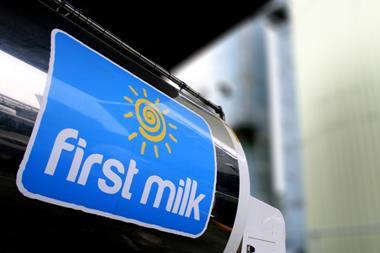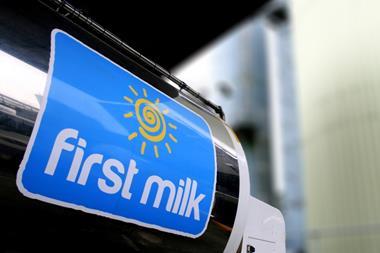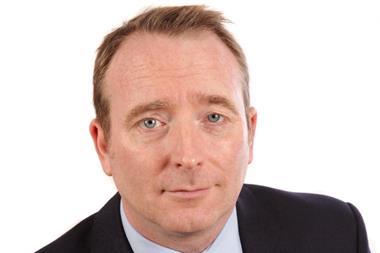Dairy co-operative First Milk is overhauling the way it pays its farmers for their milk, with the introduction of a new pricing mechanism from April that it claims will “better align market signals and milk production”.
The changes include the introduction of an A&B pricing structure, the closer alignment of butterfat, protein and hygiene payments according to the end use of milk, and a reclassification of its liquid milk pool as a balancing milk pool.
The co-operative experienced a difficult 2014, with a cash crisis prompted by plunging farmgate prices culminating in a much-maligned one-off delay in payments to farmers.
The past year had brought with it a period of “unprecedented volatility” in commodity markets and a surge in milk production which not only drove milk prices down but also “seriously challenged the mechanisms we used to set the price of milk”, said chairman Sir Jim Paice.
These challenges included a time lag between making a milk price announcement and it coming into effect when markets were moving so rapidly, and the need to send “timely signals of the value of milk which is additional to core market demand,” he added.
Paice claimed the new pricing structure would be more appropriate for dealing with the recent increased levels of volatility and would allow members to be “rewarded for producing the volume, quality and profile required” for its processing sites and main markets.
The A pricing structure is calculated using a member’s average production during the previous two calendar years, multiplied by 80%, while B volumes include any milk that is produced in addition to the allocated A volume.
The price for A volumes will be based on market returns for that milk pool, as determined by the First Milk board and announced 30 days in advance of the start of the relevant month.
The price for B volumes will be the same for all milk pools and will reflect returns from short term markets.
First Milk members will receive their new pricing schedule from next month, with detail on how the changes will be implemented. The new structure comes into force on 1 April.



















No comments yet